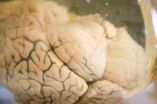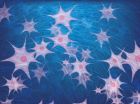(Press-News.org) New research from the Department of Neuroscience at the University of Minnesota reveals that rats show regret, a cognitive behavior once thought to be uniquely and fundamentally human.
Research findings were recently published in Nature Neuroscience.
To measure the cognitive behavior of regret, A. David Redish, Ph.D., a professor of neuroscience in the University of Minnesota Department of Neuroscience, and Adam Steiner, a graduate student in the Graduate Program in Neuroscience, who led the study, started from the definitions of regret that economists and psychologists have identified in the past.
"Regret is the recognition that you made a mistake, that if you had done something else, you would have been better off," said Redish. "The difficult part of this study was separating regret from disappointment, which is when things aren't as good as you would have hoped. The key to distinguishing between the two was letting the rats choose what to do."
Redish and Steiner developed a new task that asked rats how long they were willing to wait for certain foods. "It's like waiting in line at a restaurant," said Redish. "If the line is too long at the Chinese food restaurant, then you give up and go to the Indian food restaurant across the street."
In this task, which they named "Restaurant Row," the rat is presented with a series of food options but has limited time at each "restaurant."
Research findings show rats were willing to wait longer for certain flavors, implying they had individual preferences. Because they could measure the rats' individual preferences, Steiner and Redish could measure good deals and bad deals. Sometimes, the rats skipped a good deal and found themselves facing a bad deal.
"In humans, a part of the brain called the orbitofrontal cortex is active during regret. We found in rats that recognized they had made a mistake, indicators in the orbitofrontal cortex represented the missed opportunity. Interestingly, the rat's orbitofrontal cortex represented what the rat should have done, not the missed reward. This makes sense because you don't regret the thing you didn't get, you regret the thing you didn't do," said Redish.
Redish adds that results from Restaurant Row allow neuroscientists to ask additional questions to better understand why humans do things the way they do. By building upon this animal model of regret, Redish believes future research could help us understand how regret affects the decisions we make.
INFORMATION:
The University of Minnesota Medical School, with its two campuses in the Twin Cities and Duluth, is a leading educator of the next generation of physicians. Our graduates and the school's 3,800 faculty physicians and scientists advance patient care, discover biomedical research breakthroughs with more than $180 million in sponsored research annually, and enhance health through world-class patient care for the state of Minnesota and beyond. Visit http://www.med.umn.edu to learn more.
Study reveals rats show regret, a cognitive behavior once thought to be uniquely human
2014-06-08
ELSE PRESS RELEASES FROM THIS DATE:
A tiny molecule may help battle depression
2014-06-08
Levels of a small molecule found only in humans and in other primates are lower in the brains of depressed individuals, according to researchers at McGill University and the Douglas Institute. This discovery may hold a key to improving treatment options for those who suffer from depression.
Depression is a common cause of disability, and while viable medications exist to treat it, finding the right medication for individual patients often amounts to trial and error for the physician. In a new study published in the journal Nature Medicine, Dr. Gustavo Turecki, a psychiatrist ...
Targeting tumors using silver nanoparticles
2014-06-08
(Santa Barbara, Calif.) — Scientists at UC Santa Barbara have designed a nanoparticle that has a couple of unique — and important — properties. Spherical in shape and silver in composition, it is encased in a shell coated with a peptide that enables it to target tumor cells. What's more, the shell is etchable so those nanoparticles that don't hit their target can be broken down and eliminated. The research findings appear today in the journal Nature Materials.
The core of the nanoparticle employs a phenomenon called plasmonics. In plasmonics, nanostructured metals such ...
Quick getaway: How flies escape looming predators
2014-06-08
When a fruit fly detects an approaching predator, it takes just a fraction of a second to launch itself into the air and soar gracefully to safety—but there's not always time for that. Some threats demand a quicker getaway, even if things get a little clumsy. New research from scientists at the Howard Hughes Medical Institute's Janelia Research Campus reveals how a quick-escape circuit in the fly's brain overrides the fly's slower, more controlled behavior when a threat becomes urgent.
"The fly's rapid takeoff is, on average, eight milliseconds faster than its more controlled ...
More than just a hill of beans: Phaseolus genome lends insights into nitrogen fixation
2014-06-08
"It doesn't take much to see that the problems of three little people doesn't add up to a hill of beans in this crazy world," Humphrey Bogart famously said in the movie Casablanca. For the farmers and breeders around the world growing the common bean, however, ensuring that there is an abundant supply of this legume is crucial, both for its importance in cropping systems to ensure plant vitality and for food security. Moreover, the U.S. Department of Energy Office of Science has targeted research into the common bean because of its importance in enhancing nitrogen use ...
Argument with dad? Find friendly ears to talk it out, study shows
2014-06-06
With Father's Day approaching, SF State's Jeff Cookston has some advice for creating better harmony with dad. In a recent study, he found that when an adolescent is having an argument with their father and seeks out others for help, the response he or she receives is linked to better well-being and father-child relationships.
Adolescents who receive an reason for the father's behavior or a better understanding of who is at fault feel better about themselves and about dad as well. Those feelings about dad, in turn, are linked to a lower risk of depression for youth.
The ...
Scientists reveal details of calcium 'safety-valve' in cells
2014-06-06
UPTON, NY -- Sometimes a cell has to die-when it's done with its job or inflicted with injury that could otherwise harm an organism. Conversely, cells that refuse to die when expected can lead to cancer. So scientists interested in fighting cancer have been keenly interested in learning the details of "programmed cell death." They want to understand what happens when this process goes awry and identify new targets for anticancer drugs.
The details of one such target have just been identified by a group of scientists from the U.S. Department of Energy's Brookhaven National ...
Brain traffic jams that can disappear in 30 seconds
2014-06-06
BUFFALO, N.Y. – Motorists in Los Angeles, San Francisco and other gridlocked cities could learn something from the fruit fly.
Scientists have found that cellular blockages, the molecular equivalent to traffic jams, in nerve cells of the insect's brain can form and dissolve in 30 seconds or less.
The findings, presented in the journal PLOS ONE, could provide scientists much-needed clues to better identify and treat neurodegenerative diseases such as Alzheimer's and Huntington's.
"Our research suggests that fixed, permanent blocks may impede the transport of important ...
LSU biologist John Caprio, Japanese colleagues identify unique way catfish locate prey
2014-06-06
BATON ROUGE – Animals incorporate a number of unique methods for detecting prey, but for the Japanese sea catfish, Plotosus japonicus, it is especially tricky given the dark murky waters where it resides.
John Caprio, George C. Kent Professor of Biological Sciences at LSU, and colleagues from Kagoshima University in Japan have identified that these fish are equipped with sensors that can locate prey by detecting slight changes in the water's pH level.
A paper, "Marine teleost locates live prey through pH sensing," detailing the work of Caprio and his research partners, ...
Better tissue healing with disappearing hydrogels
2014-06-06
When stem cells are used to regenerate bone tissue, many wind up migrating away from the repair site, which disrupts the healing process. But a technique employed by a University of Rochester research team keeps the stem cells in place, resulting in faster and better tissue regeneration. The key, as explained in a paper published in Acta Biomaterialia, is encasing the stem cells in polymers that attract water and disappear when their work is done.
The technique is similar to what has already been used to repair other types of tissue, including cartilage, but had never ...
Lower asthma risk is associated with microbes in infants' homes
2014-06-06
Infants exposed to a diverse range of bacterial species in house dust during the first year of life appear to be less likely to develop asthma in early childhood, according to a new study published online on June 6, 2014, in the Journal of Allergy and Clinical Immunology.
Children who were neither allergic nor prone to wheezing as three-year-olds were the most likely to have been exposed to high levels of bacteria, and paradoxically, to high levels of common allergens.
In fact, some of the protective bacteria are abundant in cockroaches and mice, the source of these ...




